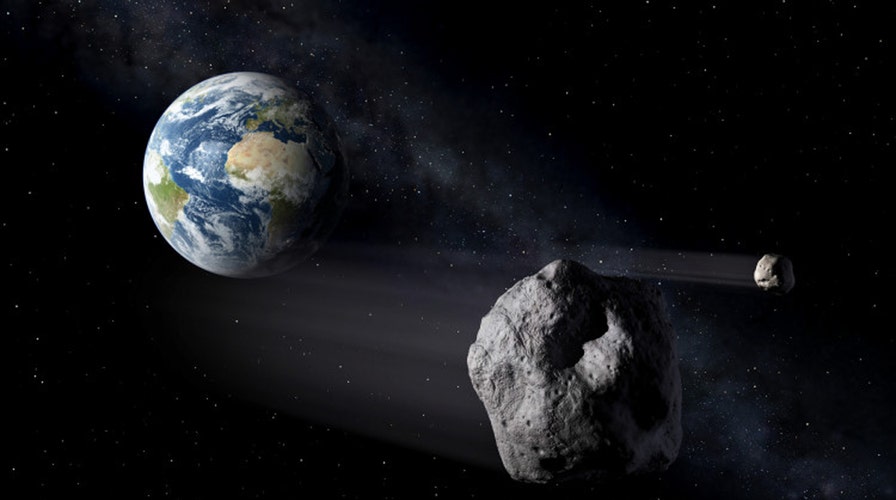Fox News Flash top headlines for May 13
Fox News Flash top headlines are here. Check out what's clicking on Foxnews.com.
A planned NASA mission to test its capability to defend Earth from an incoming asteroid could cause the planet’s first-ever artificial meteor shower, a study found earlier this year.
The Double Asteroid Redirection Test (DART) spacecraft’s mission will be to slam into the smaller of the two Didymos asteroids as they pass within about 6.8 million miles of the Earth in the fall of 2022.
CHINESE SPACE JUNK NARROWLY MISSED HITTING NEW YORK CITY, REPORT SAYS
NASA said the $69 million self-destruct mission is the first aimed at testing its ability to deflect an asteroid by ramming a spacecraft into it at high speeds.
The resulting impact would blast material from the surface of the asteroid and -- at least a small amount of it -- close enough to Earth that will eventually be drawn toward the ground, according to a March 23 study in The Planetary Science Journal.

The Double Asteroid Redirection Test (DART) spacecraft’s mission will be to slam into the smaller of the two Didymos asteroids as they pass within about 6.8 million miles of the Earth in the fall of 2022. (NASA)
Only a tiny bit of the total ejected material, known as ejecta, would actually make it through the atmosphere over a period of thousands of years, the study found. Much of it will remain within the gravitational pull of Didymos.
Some of that material could present a hazard to future space vehicles, according to the study’s author, Dr. Paul Wiegert, an astronomy and physics professor at the University of Western Ontario.
But a little bit of ejecta, the bits moving fastest after DART’s impact, could reach Earth’s sky relatively quickly and give scientists an opportunity to see the asteroid’s makeup. As the particles burn up entering the atmosphere, scientists could use the color of the light they generate to determine what materials were present.
CLICK HERE FOR THE FOX NEWS APP
The study focused on particles of about 1 centimeter in diameter or smaller, although there is a possibility that the particles could be larger. There are also expected to be many more extremely small particles that would be “almost undetectable.”
The ejecta would have to be substantially dense and larger to threaten the Earth’s surface, but particles from the DART mission or future attempts at knocking an asteroid away from a collision course with Earth could spend centuries traveling the solar system -- potentially becoming hazards to space operations at some point in the future, according to Wiegert.
He likened it to how space junk buildup in low Earth orbit is becoming a growing problem because early missions didn’t account for how they would dispose of defunct satellites.

